Harold Halibut review: this stop motion sci-fi life aquatic won’t be for everyone
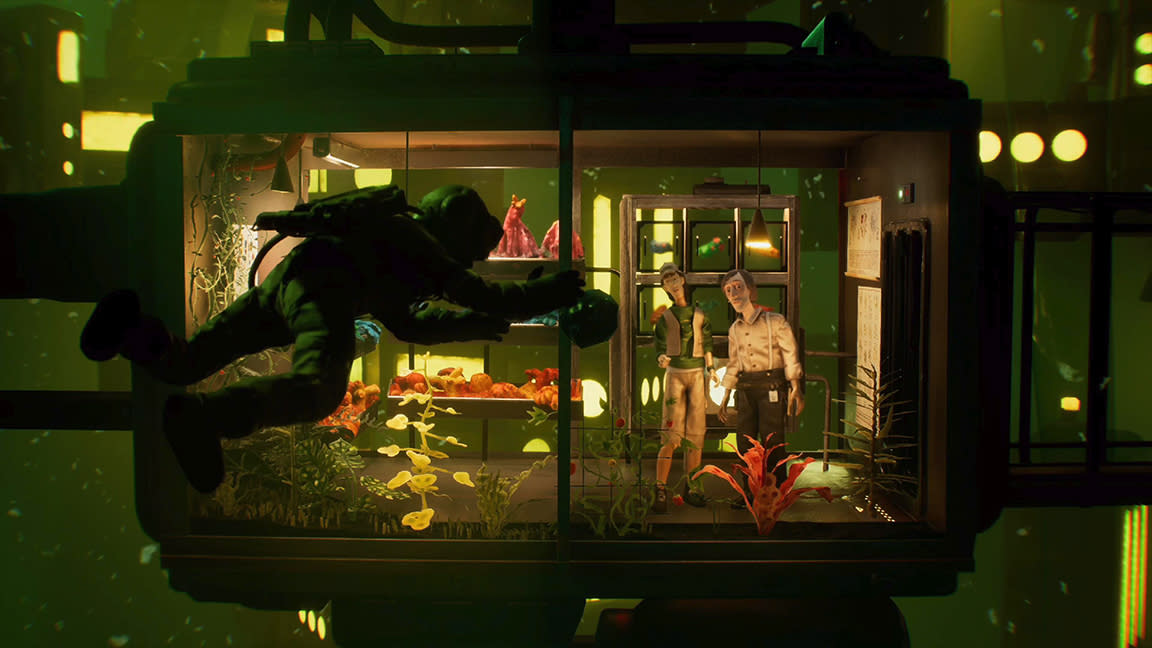
Harold Halibut: details
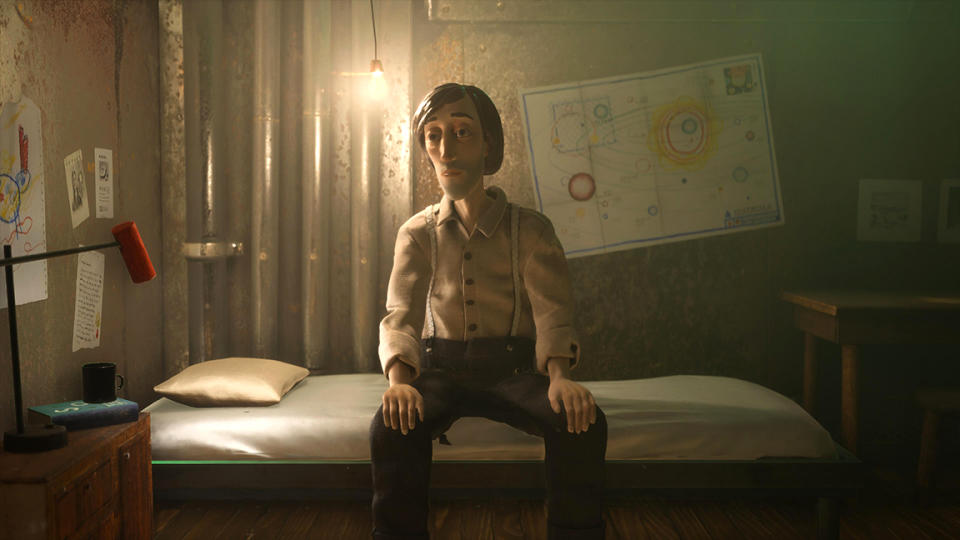
Publisher Slow Bros.
Developer Slow Bros.
Players 1
Platforms PlayStation 5 (reviewed), Xbox Series X / S, PC
Release 16 April
Your love for Harold Halibut depends on how deeply you become invested in Slow Bros’ inventive, handmade claymation-alike world of drudgery. It’s a gamble ten years in the making, to create a stylish Wes Anderson-meets-Aardman-world and reduce it to fetch quests and monologues. Harold isn’t your typical hero and his life as a handyman running to and fro for a cast of passive aggressive do-gooders and high achievers can feel laborious.
Harold Halibut is a game about loss and feeling adrift, literally and figuratively. To get the most from his nostalgic, quirky adventure you’ll need to embrace the fetch-quest focused game design and commit to inhabiting Harold’s life at the bottom of an alien ocean. The life of an harangued gopher isn't too exciting, until he meets, well… someone different.
The setup for Harold Halibut is straight forward: the Earth was on the verge of all out war so a handful of scientists launched themselves into the stars aboard the Fedora, bound for a planet to rebuild humankind. That planet turned out to be made from water, and the Fedora has spent 250 years submerged in its ocean. Generations later following a message from Earth saying 'everything's cool guys, come on home', some want to remain, some are plotting a relaunch, and Harold is muddling through trying to find his purpose.
This is a game I’ve been excited about for a long time, and our deep dive into how Harold Halibut’s handcrafted world was made piqued my interest. The sheer amount of work and artistry that has been poured into the game is astounding; the sets are real, the puppets handmade, and then digitised and remade in Unity. I choose to play in Quality mode on PlayStation 5, which is a solid 4K at 30fps, because the lighting just looks beautiful. The question is, can Harold Halibut be more than an artistic labour of love?
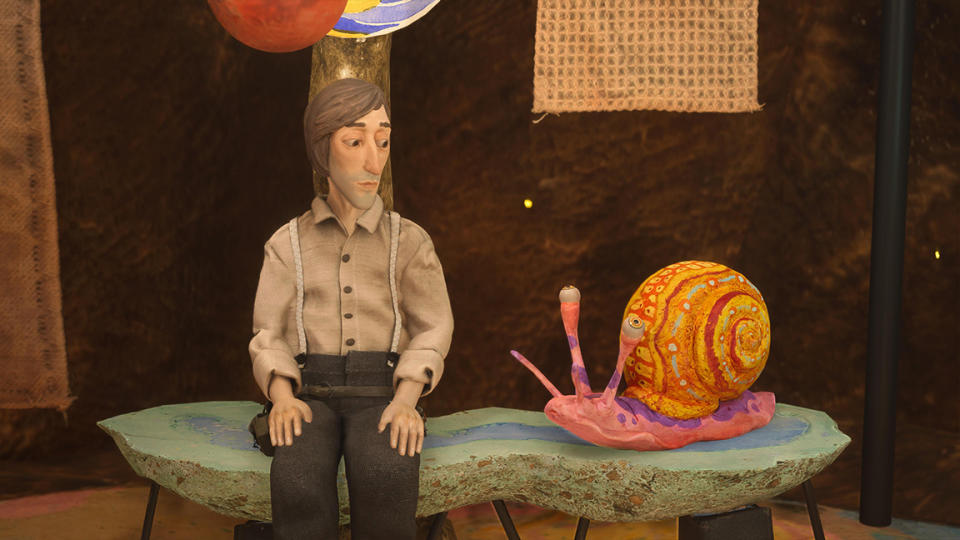
Life under this alien ocean is… not that exciting. Harold’s life revolves around cleaning tanks, feeding fish, scrubbing graffiti from walls and generally toiling while more interesting characters experiment and busy themselves with saving the Fedora. In terms of what you do in Harold Halibut, well that’s pretty much fetch-questing for everyone else.
Occasionally some casual puzzling interrupts Harold’s pursuit of the Fedora’s folk to quiz them on their personal lives or fetch an item to and fro. These puzzles are simple, no-taxing affairs, involving unscrewing panels in a set order to reveal loose wiring or colour-matching rocks for crushing. One later puzzle-of-sorts spins a room vertically and you need to drop items from above to fit in place (Harold's tidying a spare room); this plays like the old PlayStation 3 physics puzzler Trash Panic, or a very pedestrian take on Tetris.
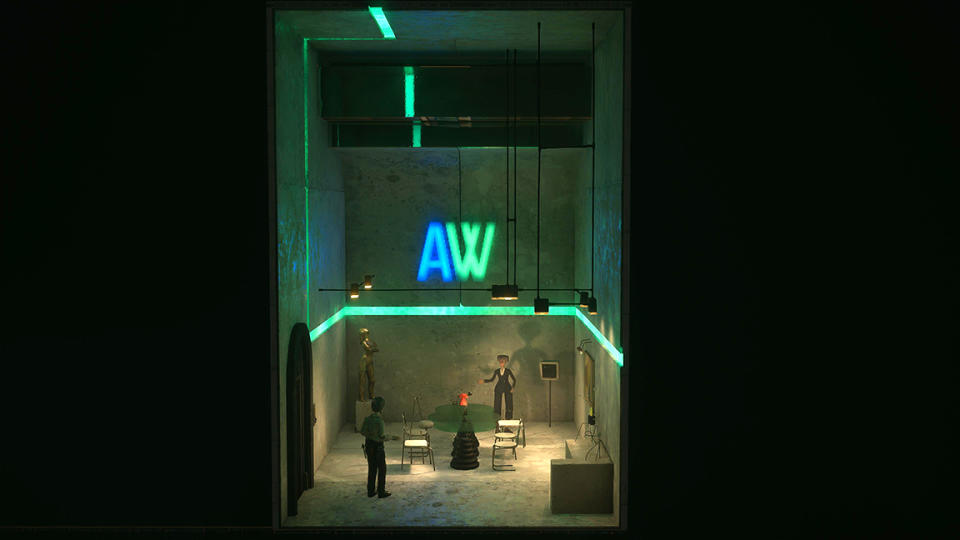
The monotony of fetch-questing changes tack when Harold stumbles upon an alien and slowly a friendship builds between the two. It’s here the game slips into its true self, as a cinematic narrative adventure. What you do, the mundanity of it all, builds and compounds, I begin to feel as disillusioned and lost as Harold. The new alien race he meets below the waves are carefree and generous, they embrace Harold and give him purpose. I begin forget the mundane life Harold has lived and can't wait to see more of the alien world I've glimpsed.
The clues were always there, the wearisome fetch-questing is designed to make you inhabit Harold and share in his sense of world-weary gloominess. There’s even a moment when I'm chastised for re-running the corridors of the Fedora when I could simply have used the internal mail system to deliver a package - Slow Bros knows it's making you do slow things, to ensure the story feels meaningful.
A large part of the game involves digging into the lives of the Fedora's cast, quizzing them on their hopes and fears. Occasionally you'll get the chance to ask more meaningful questions denoted by a ticking timer… quick, ask the question! These can be hit and miss, the timer lunges past and the text is often small and overwritten, making it hard to decide what to ask.
The rewards for spending time with your crew are varied and mixed, from simple extended commentary to a surprising barbershop quartet. There's even time for an unexpected musical number from Harold himself. In fact, the soundtrack generally is understated and unusual, sounding like found synth folk, lost recordings from mid-80s East Germany.
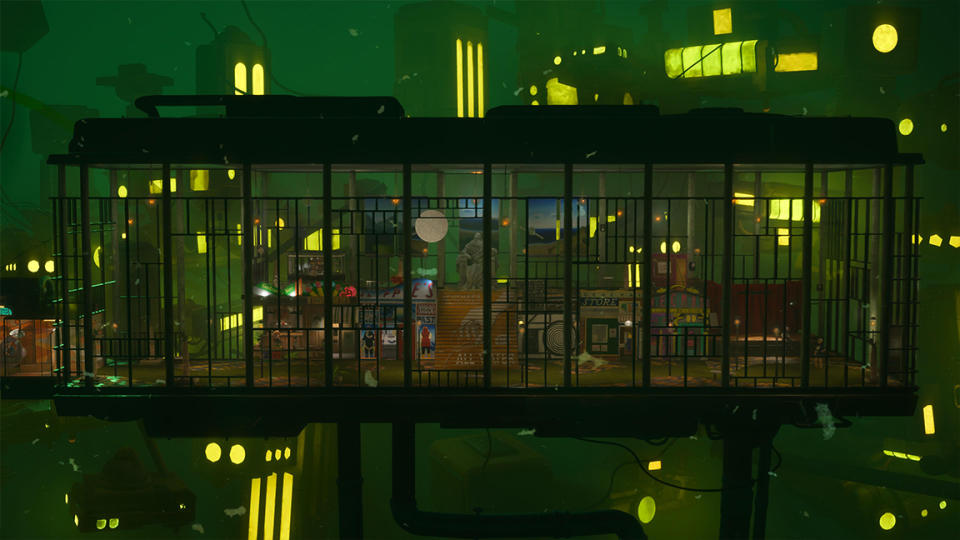
What isn’t in doubt is Slow Bros creativity and visual design. Every setting in Harold Halibut has been handmade, crafted in wood, clay, felt and cardboard, scanned and digitised into Unity. The game's characters were sketched, then moulded in clay, clothes sewn by hand and then 3D scanned using photogrammetry, retopologized, rigged, and hand-animated as well as mocapped - I can see why this game took ten years to make.
The result feels like playing a 1980s European stop motion animation - it’s bold and flawed, characters’ clothes are stiff with oversized stitching and animation is stutters purposefully. The choice of presenting Harold’s world as side-scrolling, 2D-viewed locations is yet another Wes Anderson reference but this also restricts Harold’s world, life on an alien ocean bed cast in fixed perspective feels limited.
Just gazing into the world Slow Bros has created is a joy. Every wall is etched with grubby detail; signs and scenery are hand-painted, the visible brushstrokes giving the game's world a uniquely artisan, tactile texture.
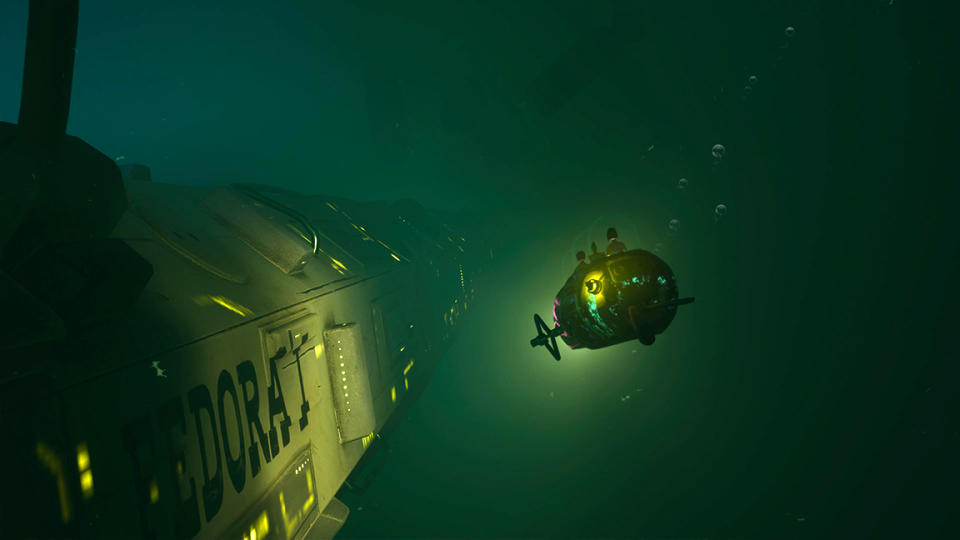
Slow Bros plays with its world and set-pieces just enough to keep you pushing on, past yet another dreary delivery quest to open up a cavernous alien world of vibrant glowing colours and heavy visible brushstrokes, a submarine clearly assembled from pieces of cardboard and sticky tape - the invention keeps Harold Halibut from being weighed down by its mundanity as metaphor gameplay.
When not showboating with a set piece Slow Bros merrily descends into its 80s stylisation, from signage and fonts to liberal use of synth music and in-world TV broadcasts pitched by The Fedora’s cynical corporate ‘big bad’ the All Water Corporation. Harold Halibut is purposefully stilted, oversized, shaky, out of tune and handmade. The Fedora is a retro time capsule of flickering CRT displays and beige technology that sits perfectly with its stop motions style. It's genuinely unlike any game world you will have experienced.

It would be too easy to say Harold Halibut is a case of style over substance when the style is this good and the substance, often painfully mundane. But it builds beautifully, and just when you think Harold’s life of fetching is just too monotonous a new twist occurs, a new handcrafted puppetry moment catches the eye - exploring the abandoned long forgotten remnants of the Fedora from outside, watching another 1980s vector graphic newscast or simply discovering whether Harold finely finds his place in the world.
The glue could have easily peeled from its cardboard world and come crashing down, but there’s just enough enjoyment in simply experiencing the creativity and visual design of Harold Halibut to get you over the hump of its devotion to fetch questing and paper-thin gameplay.
Like Wes Anderson, synth ballads and 80s Czech animation, Harold Halibut is as much an acquired taste as its many nostalgic influences. How much you enjoy the game depends on how invested you get in Harold’s curmudgeonly existence. At times, during its 18 hour play-through, you'll feel as despondent as its protagonist and in doing so its hand-wrought paper craft moments shine brighter and its final moments stay with you longer.

